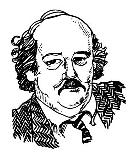(Syndicated to Kansas newspapers Dec. 8, 2014)
 Already, there is a gnawing back-of-the-mind feeling that this may be the first Legislature we’ve seen in recent memory that has been elected to take things away from the people they represent.
Already, there is a gnawing back-of-the-mind feeling that this may be the first Legislature we’ve seen in recent memory that has been elected to take things away from the people they represent.
That puts a whole new face on the Legislature which generally people elect in hopes that their state government is going to do nice things, fix problems, make things, well, better and more convenient for all of us.
Now, this cutting of services isn’t going to be the way it will be presented, of course. But very practically, this will be the session where budgets, and the services they provide, either get cut or the cost of those services gets shunted to other units of government that don’t have a link to the State General Fund where the state keeps its tax money.
That’s what happens when tax cuts two years ago reduced revenue and the state starts spending down the reserves in the State General Fund.
Last summer on July 1, the state budget looked like this: $709 million of carryover from the previous fiscal year, revenues of $5.6 billion, and a total of about $6.3 billion to spend. Lawmakers approved a budget that spent just $5.9 billion, and there was a surplus of $380 million in the general fund. Not bad.
But for this year, that carryover money, and about $5.7 billion in new revenues plus spending of $6.3 billion, puts the state about $280 million in the red. The year after this? Estimates are that there will be $5.8 billion in revenues and expenditures—cut by about $150 million—but still about $435 million less than needed to keep up with costs, such as K-12 education aid, pension funding and care of the poor.
So, we’re looking at either an increase in taxes—unlikely—or further cuts in spending.
Which means that things that the state does now—maybe contributing toward public education, providing care for the poor, repairing highways, fighting crime and even making sure that the food served in restaurants is safe—will have to be reduced.
So, essentially, those 19 fresh-faced new legislators who get sworn in next month get to start chopping away at spending. It’s making those cuts in the most politically acceptable way that is the real challenge.
You may not care that cattle on Kansas farms are brand-inspected to make sure they haven’t been stolen. If that’s not a big deal, or you just eat the meat, not the branded hides, well, you might not care about brand inspection. But we’re betting if you had a couple hundred head of cattle worth $2,000 or $2,500 each, you’d want to make sure that they don’t get stolen.
Now, that’s a single issue. But, what if, to make the budget numbers work, the Legislature had to cut the Highway Patrol budget about the time you get sideswiped on the highway, or your school district says without more state aid, it’s going to have to increase the number of children in classrooms or raise your property taxes to pay for the cost of teachers for reasonable-sized classes?
What can you do without? Or, what can city dwellers do without that rural Kansans need? Maybe nobody’s shooting pheasant from your deck, but there are thousands of square miles of land owned by rural Kansans who want and need that hunting to be regulated.
So, does it come down to cutting spending in a manner that the fewest Kansans notice? Or just finding some percentage by which all spending on everything is cut, and everything seems, well, fair, but not really businesslike? That’s the real choice here.
And, it’s probably worth remembering that every dollar the state spends is to do something that a majority of Kansans, or at least their legislators, think is a necessary—or maybe just nice—thing to do.
That’s what makes the upcoming session a little different than we’ve seen in recent years. It’s about what lawmakers and the governor take away.
